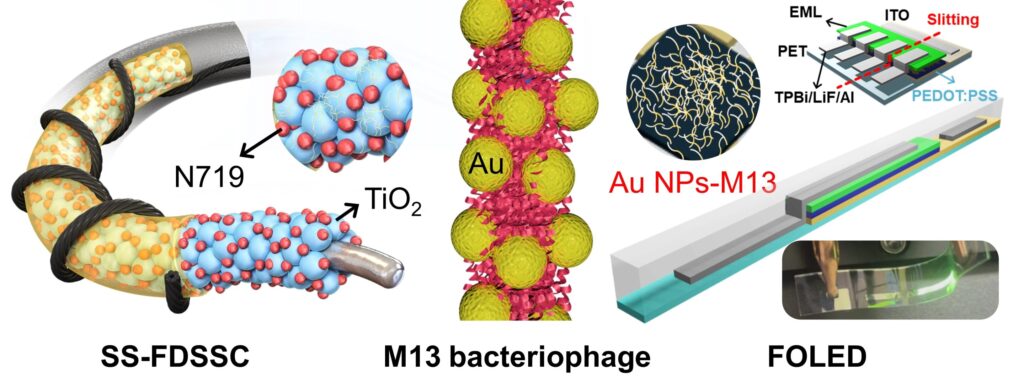A research team developed hybrid bio-nanostructures then used them to fabricate fibrous solar cells (FSCs) and fibrous organic light-emitting diodes (FOLEDs) that demonstrated high performance and stability across a wide temperature range, from minus 80 degrees Celsius to 150 degrees Celsius. The team reported a 40% increase in the power conversion efficiency (PCE) of the FSCs and a 47% increase in the external quantum efficiency (EQE) of the FOLEDs.
The findings are published in the journal Small Structures. The research team includes Dr. Jae Ho Kim and Dr. Myungkwan Song from the Energy and Environmental Materials Research Division at the Korea Institute of Materials Science (KIMS) in collaboration with Professor Jin-Woo Oh from Pusan National University and Professor Jin Woo Choi from Kongju National University,
The “spin coating” method, commonly used for coating metal nanoparticles, allows for the quick and simple creation of thin films. However, this method has the drawback of being unable to coat metal nanoparticles evenly and orderly.
To address this issue, the team synthesized the “M13 bacteriophage,” a biomaterial that has the property of arranging metal nanoparticles uniformly and orderly. The M13 bacteriophage possesses active groups that bind to metal cations, ensuring consistent arrangement of all metal cations.
As a result, the hybrid bio-nanostructure synthesized from M13 bacteriophage exhibits high stability in air and moisture, and enables high-performance FSCs and FOLEDs. In addition, it was confirmed that it showed excellent characteristics in extreme environments (-80 ℃ and 150 ℃) and washing durability.
-

Hybrid bio-nanostructure synthesis process. Credit: Korea Institute of Materials Science (KIMS)
-

Hybrid bio-nanostructure developed in this study. Credit: Korea Institute of Materials Science (KIMS)
The M13 bacteriophage can be utilized in various electronic devices, including piezoelectric devices, solar cells, sensors, and organic light-emitting diodes. A distinctive feature of this technology is its ability to easily arrange and align metal nanoparticles when using hybrid bio-nanostructures. It can also maximize the surface plasmonic effect, making it applicable to a wide range of electronic devices.
If this technology is employed to accelerate localization and mass production, it is expected to generate significant economic benefits for electronic device companies.
Song, a principal investigator and the lead of this research, said, “By utilizing hybrid bio-nanostructures, we can improve both performance and stability in the field of electronic devices.
“It is expected to be applied in various fields such as sensor materials as well as energy production and storage materials in the future.”


